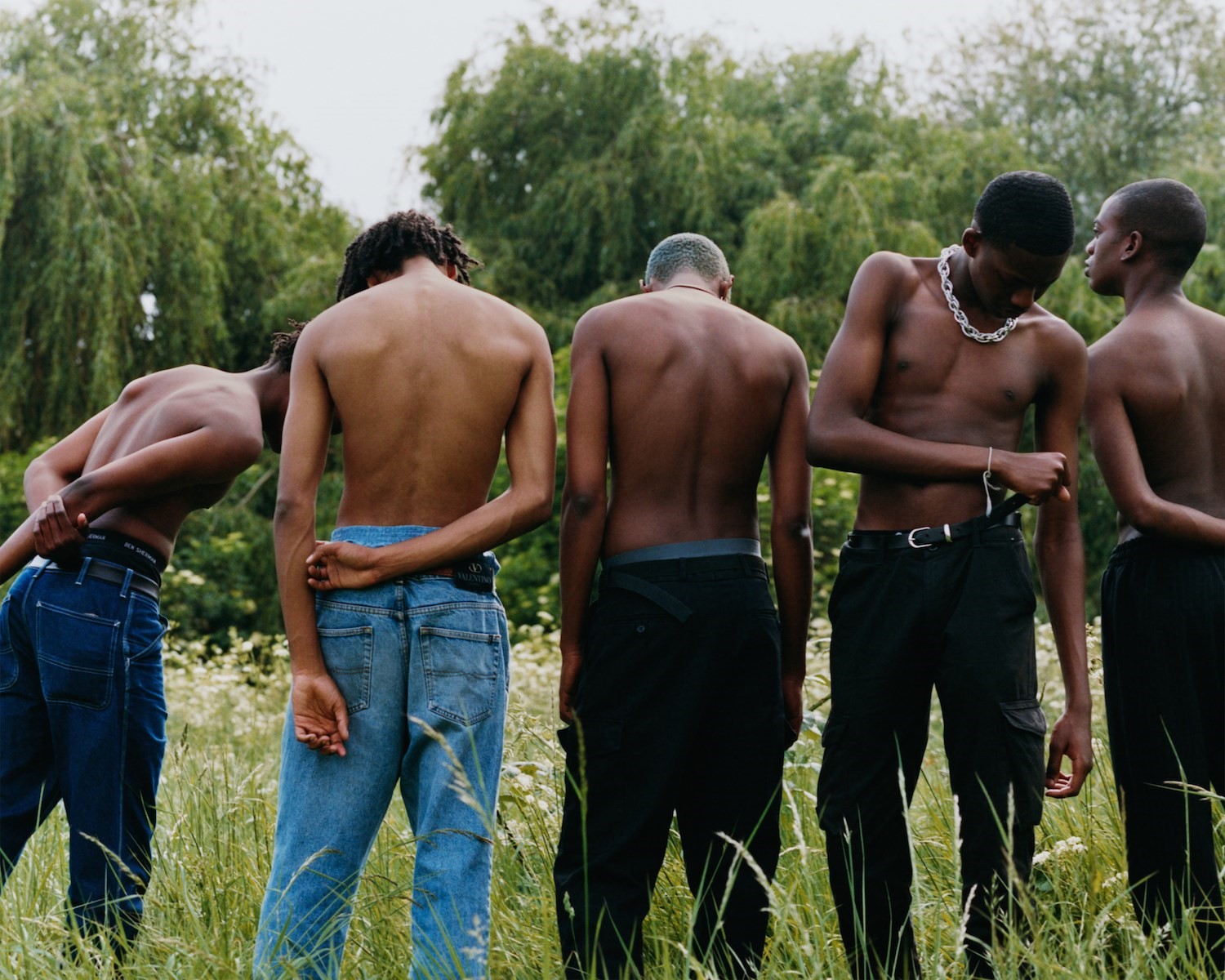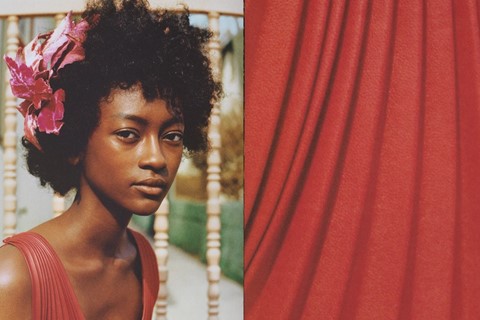The American photographers Tyler Mitchell and Ryan McGinley have risen to global acclaim for their dream-like imagery of youth and possibility. Their photographs are mesmerising meditations on a utopian state of bliss, offering the understanding that liberation from all that constrains us is not only possible but a fundamental necessity of existence. It is a viewpoint that led both artists to prominence at the outset of their careers: in 2018, Mitchell, then 23, was the first Black photographer to shoot the cover of American Vogue; 15 years earlier, McGinley, then 25, became the youngest artist to have a solo show at the Whitney Museum of American Art.
The July 28 publication of I Can Make You Feel Good, Mitchell’s debut monograph, is an intimate and powerful vision of Black utopia, bathed in the rich sun-soaked light which has become the photographer’s signature. It stands alongside The Kids Are Alright (2002), McGinley’s first handmade book, which captured the exploits of the artists, skaters, and graffiti writers populating New York’s downtown scene at the turn of the millennium, in an ongoing conversation about the power of beauty, freedom, and truth.
On a Friday in July, McGinley met with Mitchell in his Brooklyn home to discuss the joys of coming of age as skaters, artists, and authors in the new millennium.
Ryan McGinley: When I came in, we were talking about your library. You’re building up your book collection. What are the spots that you hit? I call bookstores drug shops because I get high from buying photo books.
Tyler Mitchell: I’m all over the place. It’s whatever I grab and find anywhere. I miss the obvious books; the totems that I probably should have, I don’t have. I’ve gone for the ones that are harder to get or are more in the moment. The Kids Are All Right and Viviane Sassen’s Umbra were like calls to action; they are both delicate, amazing revisions of what I’ve thought a photography book was.
RM: Books are the most important part of photography for me. They let me know that there was a community of other like-minded artists. Sometimes you don’t look at them for few years, but you can revisit it and it always gives you something different every time. There’s this idea of feeling recognised and really being seen when you have a book.
TM: From that starting point to having a published book, there’s something psychically that happens, like I exist, I’m alive. Like even if I like died tomorrow, there would be this book that would live on. Books are even more important than a show, which seems to be the marker of success. The book lives on in people’s homes. I feel good that people can now experience the work in book form rather than on Instagram ‘cause that’s how it started.
RM: Let’s start in the beginning. Where are you from?
TM: I’m from Marietta, Georgia. I probably wasn’t myself for like the first 13 years of my life. I hadn’t found the thing that I really loved; I was just doing things like basketball and soccer. Skateboarding was the first thing that I found that was like, OK, this is a community that I love.
RM: What got you into image-making?
TM: I started to understand image-making style through skate videos. Spike Jonze was a huge inspiration to me. Everything he did with Fully Flared, taking the more cinematic approach, down to Baker Three, which is just raw, fuck-shit-up destruction.
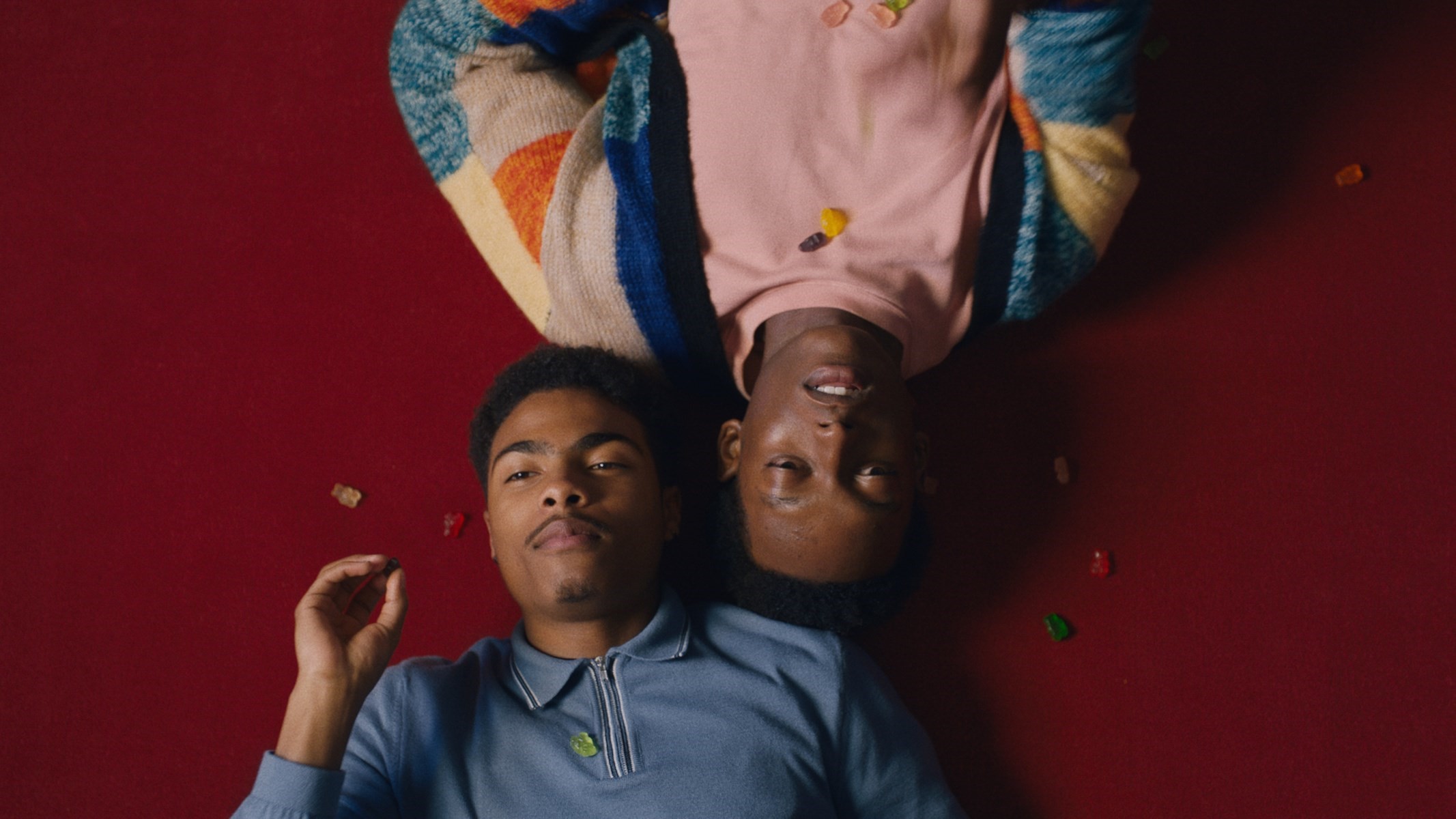
RM: For me, skateboarding was important because it brought me out of the suburbs of New Jersey into a community of people where it didn’t matter what the colour of your skin was, what your economic background was. You show up at the skate spot and if you’re cool and if you’re good, you can hang.
TM: And even if you’re not good, if you’re just cool and you want to learn, that’s alright.
RM: It’s the antithesis of team sports. Skating is about individuality.
TM: But also it’s you against yourself. The only dialogue you’re having is with yourself to get better.
RM: Skateboarding is tied to the street. It’s dirty and gritty. There isn’t this idea of entrepreneurship that you can take this art form or sport and turn it into like a career, and seeing Spike [Jonze] do that was inspiring. It created a new path.
TM: It woke me up to things. Over time it was a natural portal into what I’m doing now. Music also was foundational in this. Skate, rap, music, photography, and filmmaking are all intertwined.
RM: What was your video camera?
TM: It was the Canon 70; it has that flip mode between the video and the photos. I would literally be taking photos while I was doing videos. My brain really conflates those two into one. In a similar way, I’ve always I focused on the mundane images of Black folks, just being like: how can I conflate those feelings into a work? That’s what I hope to make the book about. The book doesn’t place importance on one thing over the other. I like that there’s fluidity between film stills and photographic stills. There is a still image from my film Idyllic Space that I made in Atlanta. Then on the next page there’s a photograph that I made in a park in Bay Ridge, Brooklyn next to a photograph that I made for a magazine.
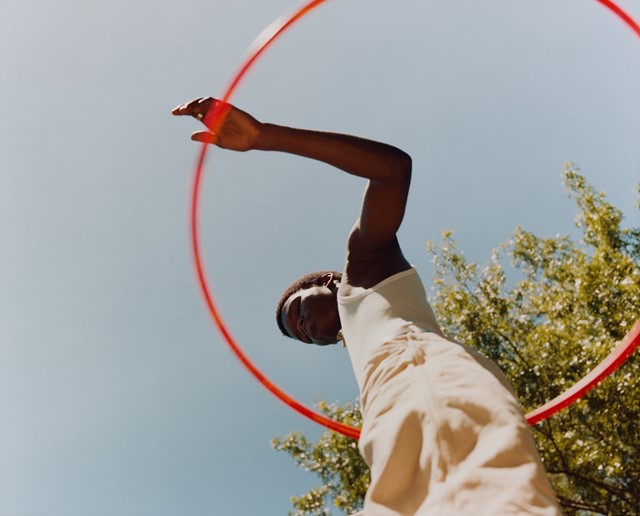
RM: One of the most important things as a photographer making art and shooting for magazines, films, and fashion is to keep your style consistent.
TM: That’s definitely a big part of it. Whether that’s photographing Beyoncé, Spike Lee, skaters in Cuba, or friends – it’s about making it all feel like my work.
RM: When people ask me how I started taking photos, I say I was the kid with the fisheye lens and the Handycam that was filming everyone. At that time I didn’t think about it as like photography. I was drawn to the in-between moments where like everyone was just chilling. I gravitated to people being like their authentic selves.
TM: What was it like coming from New Jersey into New York?
RM: The New York that I saw was like a Scorsese film. One of my mentors is Jack Walls, a poet and who was the lover of Robert Mapplethorpe. We’ve been friends since 1998, so for 22 years, and it’s amazing to have his insights on art, photography, being photographed by Mapplethorpe. It helps me as an artist.
TM: The New York I came to in 2013 and the experience I had in those first two years dictate what this book has become for me. There were people who I saw making Black folks the protagonists of their images in uncompromising yet widely seen ways that reminded me that I can be that as well. My work is like a series of inspirations, you being one of them. Seeing those images as a teenager through Tumblr and being like that looks fun – that’s what I want to do and live but also what I want to make.
RM: Yo, film or digital?
TM: Digital is too easy.
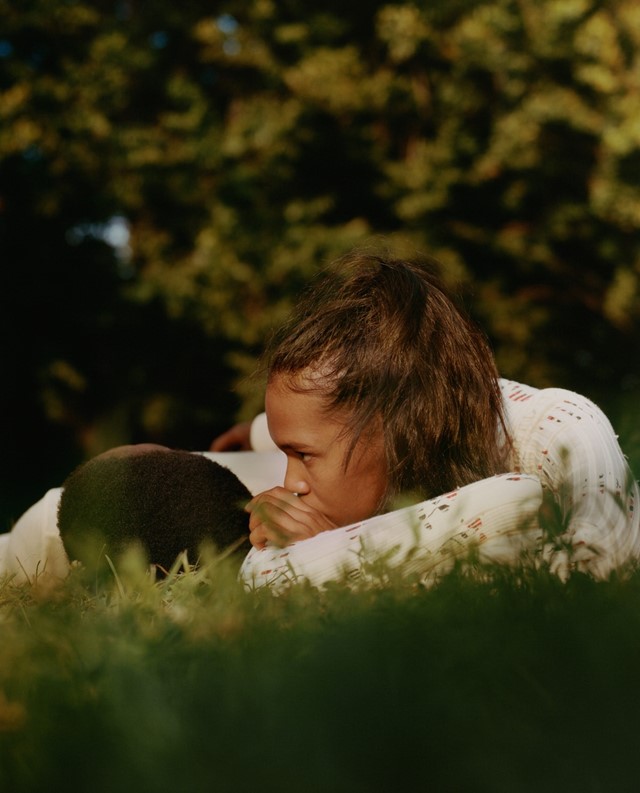
RM: Why does everyone who is young shoot film?
TM: I think it’s the fact that our generation is obsessed with nostalgia. There’s no denying my own personal relationship with nostalgia and film.
RM: I’m excited that film is coming back. I’m also excited about movies like Moonlight winning Best Picture and other works of art kind of expanding our notion of masculinity. What does masculinity mean to you?
TM: I don’t think it means much of anything. I’m interested in taking down or subverting masculinity.
RM: Masculinity is an interesting word for me. I immediately identify it with sexuality because growing up with queer masculinity, being masculine was like passing. Your generation has so much more language for that, which I admire.
TM: I don’t identify as queer so when I think of masculinity, I’m thinking about it from the point of view of growing up Black in the South. If I wear a certain hoodie, my mother is concerned that I’m going to be pulled over, stopped, killed, et cetera. Those kinds of preventions from expressing oneself are passed down generational laws or rules around masculinity and what it should be.
RM: It has to do a lot with presentation – what that role means or who represents it.
TM: I’m in fashion because those things are linked: identity, dress, masculinity, and personhood. Images have a powerful way of changing associations and making all of these things irrelevant so we have new notions of what life could be.
I Can Make You Feel Good by Tyler Mitchell is published by Prestel.
